Your pain is my pain: what makes us feel empathy?
The ability to feel what others are feeling, a phenomenon known as empathy, is a key part of people’s social behaviour. Despite us knowing how empathy feels, the neural processes behind empathy have long remained unknown. Dr Valeria Gazzola and Professor Christian Keysers, of The Social Brain Lab based in the Netherlands Institute for Neuroscience, employ the latest techniques in neuroscience to uncover how this process plays out in the brain
TALK LIKE A NEUROSCIENTIST
EMPATHY – sharing and understanding the feelings of another
fMRI – functional magnetic resonance imaging – a technique used to measure brain activity
HAEMOGLOBIN – the protein in red blood cells that carries oxygen to cells that need it
NEURONS – nerve cells, responsible for sensing the world, relaying the information to where it is needed, and sending commands to our muscles
NEUROSCIENCE – the study of the structure and function of the brain and nervous system
PSYCHOPATHY – a personality disorder marked by antisocial behaviour and lowered or absent emotional responses, such as empathy
SYNAPSE – the ‘junction’ between two nerve cells or between a nerve cell and a muscle cell
Why do we wince when we see someone else stub their toe? Why do we enjoy watching TV shows where actors perform daring stunts or fall in love? How is it that we can feel what others feel? Understanding empathy, and how the brain creates it, is the main mission of The Social Brain Lab at the Netherlands Institute for Neuroscience in Amsterdam. Dr Valeria Gazzola and Professor Christian Keysers, partners in science and in life, run the Social Brain Lab and have unearthed some tantalising secrets of the mind.
FROM THE OLD TO THE NEW
Not long ago, scientists understood empathy through the ‘hamburger model’. “For instance, when I see my friend reach for her empty glass, and I refill it for her, people thought that three separate things happen in the brain,” says Valeria. “The first is that my eyes see her reaching for an empty glass and my brain picks this up. The last is that my motor system leads me to refill her glass. In the middle is the ‘meaty’ part – some sort of abstract thinking and decision-making that led me to conclude that the action of my friend meant she was thirsty, and so refilling her glass was the appropriate response.”
However, since Valeria and Christian began working in this area, our understanding of empathy has changed dramatically. “Mirror neurons are brain cells that allow me to plan and sense my own actions,” says Christian. “However, they are not only active when I move or feel with my own body, but also when I watch someone else move.” This means that mirror neurons can sense what another body is feeling as if it were happening to one’s own. “This led us to conclude that the hamburger model is wrong,” says Valeria. “The motor system does not get involved only once the decision to act has been made, but is an integral part of perceiving the experiences of people around you.”
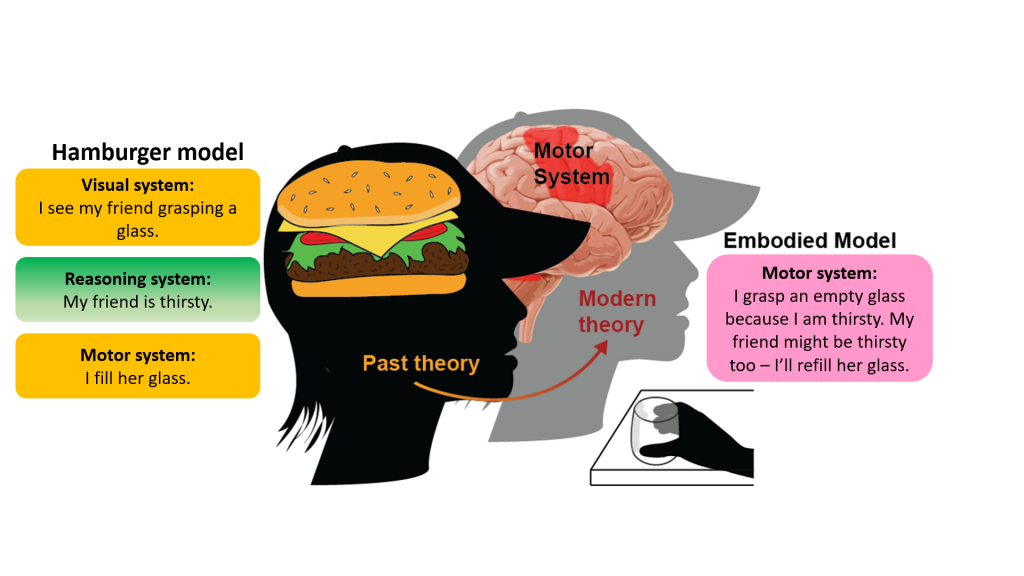
This figure shows how neuroscientists moved from thinking we infer other people’s intentions through abstract thinking (the hamburger model) to the more modern idea of having spontaneous insight of what people do and feel based on our own motor system.
IMAGING BRAINWAVES
The researchers were able to make these conclusions using functional magnetic resonance imaging (fMRI). “When a brain cell becomes active, it requires oxygen, which is brought to it by haemoglobin in the blood,” says Christian. “The haemoglobin changes shape once it has released its oxygen, a change which disrupts the magnetic field of the MRI machine. This means we can measure changes in brain activity indirectly by pinpointing where these disruptions take place.”
An experiment using fMRI to investigate empathy can look something like this: “We can record brain activity when you experience pain, such as a pin prick on your finger,” says Valeria. “This allows us to identify the brain regions involved in experiencing pain first-hand. Then, we can show you videos of other people experiencing pain and can see that many of the same brain regions become active again – you feel their pain similarly to how you would feel your own.”
LAB RATS
fMRI is a non-invasive technique suitable for humans, but it cannot pinpoint the activity of individual neurons. “For instance, when we witness the pain of others, it may be that although the same brain areas become active as when we experience pain ourselves, it is possible it is not the same neurons that are activated,” says Christian. Rats are often used as a model species in experiments that measure and modify the activity and function of individual neurons, and so can pinpoint which ones are involved in an empathic response.
The Social Brain Lab has used studies on rats to get an understanding of empathy at the cellular level. “We found that if we scared a rat, other rats close by also became scared,” says Valeria. “By measuring the activity of individual neurons, we found that the same neurons became active in the rat when in pain and when witnessing the pain of another. However, if we inhibited the area containing these emotional mirror neurons in the observer rats, they no longer became scared.” These studies help the researchers uncover the precise ‘wiring’ behind this kind of empathy, and also show that this empathic response is not unique to humans but is found within other mammals as well.
HIGH AND LOW EMPATHY – OR NONE AT ALL?
The general population shows wildly different levels of empathy, depending on the person and on the situation. “We know that genetic differences influence your level of empathy, but empathy can also be increased by simply being told the person you witness in pain has much in common with you – and, on the flip side, reduced if you are told they are a competitor,” says Valeria. “There is also evidence you can train yourself to become more empathic, and ultimately change your own brain activity. This gives us the flexibility to adapt to our environment and the responsibility to make good social decisions.”
It is commonly believed that psychopathic individuals do not experience empathy, but Christian and Valeria wanted to investigate this belief in more detail. “We showed incarcerated psychopathic individuals and control participants videos of people being hurt and then slapped the participants themselves on the hand,” says Christian. “In both instances, we recorded brain activity using fMRI. We found that psychopathic individuals’ pain regions showed less activity than control participants when watching others in pain, confirming the idea that they have reduced empathy.”
“However,” adds Valeria, “in a follow-up experiment, we explicitly asked them to empathise with the person in the video. Then, they had the same brain activity as the control group. This suggests that psychopathic individuals are not incapable of empathy but, rather, they do not feel it spontaneously.”
NEXT STEPS
As neuroscience becomes ever more powerful and precise, Valeria and Christian have no intention of letting up in their work any time soon. “For me, one of the great mysteries I would like to understand is what makes mirror neurons special,” says Christian. “Are they different to other nerve cells? How did they develop in evolution and also in our own lives? Can certain experiences lead to our brains wiring new mirror neurons?”
Valeria agrees that there is still much to be done and understood. “Social behaviour is hugely complex,” she says. “Understanding how the responses of single cells eventually lead to social interaction feels like unravelling a magical process. I will continue to use the most recent technological advances to investigate the complexity of the social brain.”
Reference
https://doi.org/10.33424/FUTURUM206
EMPATHY – sharing and understanding the feelings of another
fMRI – functional magnetic resonance imaging – a technique used to measure brain activity
HAEMOGLOBIN – the protein in red blood cells that carries oxygen to cells that need it
NEURONS – nerve cells, responsible for sensing the world, relaying the information to where it is needed, and sending commands to our muscles
NEUROSCIENCE – the study of the structure and function of the brain and nervous system
PSYCHOPATHY – a personality disorder marked by antisocial behaviour and lowered or absent emotional responses, such as empathy
SYNAPSE – the ‘junction’ between two nerve cells or between a nerve cell and a muscle cell
Why do we wince when we see someone else stub their toe? Why do we enjoy watching TV shows where actors perform daring stunts or fall in love? How is it that we can feel what others feel? Understanding empathy, and how the brain creates it, is the main mission of The Social Brain Lab at the Netherlands Institute for Neuroscience in Amsterdam. Dr Valeria Gazzola and Professor Christian Keysers, partners in science and in life, run the Social Brain Lab and have unearthed some tantalising secrets of the mind.
FROM THE OLD TO THE NEW
Not long ago, scientists understood empathy through the ‘hamburger model’. “For instance, when I see my friend reach for her empty glass, and I refill it for her, people thought that three separate things happen in the brain,” says Valeria. “The first is that my eyes see her reaching for an empty glass and my brain picks this up. The last is that my motor system leads me to refill her glass. In the middle is the ‘meaty’ part – some sort of abstract thinking and decision-making that led me to conclude that the action of my friend meant she was thirsty, and so refilling her glass was the appropriate response.”
However, since Valeria and Christian began working in this area, our understanding of empathy has changed dramatically. “Mirror neurons are brain cells that allow me to plan and sense my own actions,” says Christian. “However, they are not only active when I move or feel with my own body, but also when I watch someone else move.” This means that mirror neurons can sense what another body is feeling as if it were happening to one’s own. “This led us to conclude that the hamburger model is wrong,” says Valeria. “The motor system does not get involved only once the decision to act has been made, but is an integral part of perceiving the experiences of people around you.”

This figure shows how neuroscientists moved from thinking we infer other people’s intentions through abstract thinking (the hamburger model) to the more modern idea of having spontaneous insight of what people do and feel based on our own motor system.
IMAGING BRAINWAVES
The researchers were able to make these conclusions using functional magnetic resonance imaging (fMRI). “When a brain cell becomes active, it requires oxygen, which is brought to it by haemoglobin in the blood,” says Christian. “The haemoglobin changes shape once it has released its oxygen, a change which disrupts the magnetic field of the MRI machine. This means we can measure changes in brain activity indirectly by pinpointing where these disruptions take place.”
An experiment using fMRI to investigate empathy can look something like this: “We can record brain activity when you experience pain, such as a pin prick on your finger,” says Valeria. “This allows us to identify the brain regions involved in experiencing pain first-hand. Then, we can show you videos of other people experiencing pain and can see that many of the same brain regions become active again – you feel their pain similarly to how you would feel your own.”
LAB RATS
fMRI is a non-invasive technique suitable for humans, but it cannot pinpoint the activity of individual neurons. “For instance, when we witness the pain of others, it may be that although the same brain areas become active as when we experience pain ourselves, it is possible it is not the same neurons that are activated,” says Christian. Rats are often used as a model species in experiments that measure and modify the activity and function of individual neurons, and so can pinpoint which ones are involved in an empathic response.
The Social Brain Lab has used studies on rats to get an understanding of empathy at the cellular level. “We found that if we scared a rat, other rats close by also became scared,” says Valeria. “By measuring the activity of individual neurons, we found that the same neurons became active in the rat when in pain and when witnessing the pain of another. However, if we inhibited the area containing these emotional mirror neurons in the observer rats, they no longer became scared.” These studies help the researchers uncover the precise ‘wiring’ behind this kind of empathy, and also show that this empathic response is not unique to humans but is found within other mammals as well.
HIGH AND LOW EMPATHY – OR NONE AT ALL?
The general population shows wildly different levels of empathy, depending on the person and on the situation. “We know that genetic differences influence your level of empathy, but empathy can also be increased by simply being told the person you witness in pain has much in common with you – and, on the flip side, reduced if you are told they are a competitor,” says Valeria. “There is also evidence you can train yourself to become more empathic, and ultimately change your own brain activity. This gives us the flexibility to adapt to our environment and the responsibility to make good social decisions.”
It is commonly believed that psychopathic individuals do not experience empathy, but Christian and Valeria wanted to investigate this belief in more detail. “We showed incarcerated psychopathic individuals and control participants videos of people being hurt and then slapped the participants themselves on the hand,” says Christian. “In both instances, we recorded brain activity using fMRI. We found that psychopathic individuals’ pain regions showed less activity than control participants when watching others in pain, confirming the idea that they have reduced empathy.”
“However,” adds Valeria, “in a follow-up experiment, we explicitly asked them to empathise with the person in the video. Then, they had the same brain activity as the control group. This suggests that psychopathic individuals are not incapable of empathy but, rather, they do not feel it spontaneously.”
NEXT STEPS
As neuroscience becomes ever more powerful and precise, Valeria and Christian have no intention of letting up in their work any time soon. “For me, one of the great mysteries I would like to understand is what makes mirror neurons special,” says Christian. “Are they different to other nerve cells? How did they develop in evolution and also in our own lives? Can certain experiences lead to our brains wiring new mirror neurons?”
Valeria agrees that there is still much to be done and understood. “Social behaviour is hugely complex,” she says. “Understanding how the responses of single cells eventually lead to social interaction feels like unravelling a magical process. I will continue to use the most recent technological advances to investigate the complexity of the social brain.”
 DR VALERIA GAZZOLA AND PROFESSOR CHRISTIAN KEYSERS
DR VALERIA GAZZOLA AND PROFESSOR CHRISTIAN KEYSERS
The Social Brain Lab, Netherlands Institute for Neuroscience, Royal Netherlands Academy of Arts and Sciences, Amsterdam, Netherlands
FIELD OF RESEARCH: Neuroscience
RESEARCH PROJECT: Researching the neural basis for empathy
VALERIA’S FUNDERS: VIDI grant 452-14-015
ERC-stG 758703
CHRISTIAN’S FUNDERS: VICI grant 453-15-009
ERC-StG 312511
NARSAD young investigator grant
 DR VALERIA GAZZOLA AND PROFESSOR CHRISTIAN KEYSERS
DR VALERIA GAZZOLA AND PROFESSOR CHRISTIAN KEYSERS
The Social Brain Lab, Netherlands Institute for Neuroscience, Royal Netherlands Academy of Arts and Sciences, Amsterdam, Netherlands
FIELD OF RESEARCH: Neuroscience
RESEARCH PROJECT: Researching the neural basis for empathy
VALERIA’S FUNDERS: VIDI grant 452-14-015
ERC-stG 758703
CHRISTIAN’S FUNDERS: VICI grant 453-15-009
ERC-StG 312511
NARSAD young investigator grant
ABOUT NEUROSCIENCE
Neuroscience is an increasingly powerful scientific discipline that is progressively uncovering more and more about how our brains work. Valeria and Christian explain more.
WHAT DO YOU FIND REWARDING ABOUT YOUR FIELD?
Some people argue that science, especially neuroscience, is overly reductionist – the argument goes that if you are fascinated by the beauty of a rose, cutting it into pieces and examining each piece will destroy its beauty. But for us, the great beauty of neuroscience is the discovery that nature uses simple principles to create wonderfully intricate minds.
WHAT CAN BE CHALLENGING?
Grant applications are an essential part of a successful career in science and they require developing a range of skills, like being able to think big – that is, having an idea that will keep you busy for the next five to ten years! You need to able to write about your idea in a precise, convincing and, at the same time, easy to understand manner and to present it in about five to ten minutes in a TEDxTalk-like performance! Of course, like most challenges in science, grant applications can also be very rewarding.
HOW IMPORTANT IS COLLABORATION IN YOUR WORK?
Neuroscience involves the coming together of many different disciplines. Biology is needed to understand the mechanisms of the brain; psychology to understand what drives behaviour; physics and engineering to understand the high-tech devices we use; computer science to program the software and analyse the data; communication skills to write and talk about your findings in a compelling way. No one person can excel in all these disciplines, so we built a team that covers all these different skillsets.
HOW DOES WORKING AS A COUPLE AFFECT YOUR WORK?
It can be lonely to be a leader of a team, with nobody telling you what to do and facing obstacles that have never been solved. Working alongside your partner changes this. You share any pains or frustration and support each other. It also helps you question your own way of thinking and appreciate different approaches. Many scientific breakthroughs have been the result of close collaborations. For us, the privilege of working with a person you love makes every moment more rewarding, and our work more creative.
WHAT ISSUES WILL THE NEXT GENERATION OF NEUROSCIENTISTS FACE?
It is an exciting time to be a neuroscientist. We now have many powerful tools to peek into the brain and see how its activity relates to our behaviour and our mind. The next great challenge is to master the many skills necessary to use these methods effectively, to have the creativity to invent new impactful experiments, and to have the insight to understand what the resultant data means. Neuroscience can give us the tools to help those with mental disorders and to unravel the mysteries of what makes us who we are.
EXPLORE A CAREER IN NEUROSCIENCE
• Valeria and Christian suggest finding summer internships or finding a part-time research assistant position to see whether you enjoy working in laboratories. Explore the internship opportunities offered by the Netherlands Institute for Neuroscience.
• Many neuroscience institutions provide outreach initiatives. The Netherlands Institute for Neuroscience has a yearly open day, holds talks in schools during science week and also allows school students to visit at certain times.
• According to PayScale, the average salary in the Netherlands for careers in neuroscience is around €38,500.
Valeria and Christian recommend taking subjects like mathematics, physics, biology and philosophy at school and college, as well as English if it is not your first language.
At university, neuroscience can sometimes be a degree in itself, but there are many different possible approaches – it is a field that can be approached through subjects such as neurobiology, biology and psychology. Courses involving statistics, programming and linear algebra will also prove useful.
HOW DID VALERIA BECOME A NEUROSCIENTIST?
WHAT WERE YOUR INTERESTS AS A YOUNGSTER?
I inherited an interest in plants from my mum and photography from my dad, as well as construction-artistic work. Since a very young age, I have been fascinated by the behaviour of people around me. I remember being disturbed and intrigued when a pre-school friend told me I could only play with them if I stopped playing with another friend.
WHAT INSPIRED YOU TO BECOME A SCIENTIST?
The interest came progressively, once I started university. At first, I thought I would become a teacher, but over time I discovered the joy of facing the unknown and finding ways to tackle it.
WHAT ATTRIBUTES HAVE MADE YOU SUCCESSFUL AS A SCIENTIST?
I have a very bad memory, which sounds like a weakness, but has led to me often questioning how I work. As I often forget what I’ve done in the past, I don’t hold too many strong assumptions and am open to alternative ways of addressing a problem.
HOW DO YOU OVERCOME OBSTACLES IN YOUR WORK?
Obstacles are motivating, fascinating and eye-opening, and thinking of creative ways to overcome them is the fun part. I dislike routine and easily become bored. I excel at making my life difficult by looking for new challenges!
WHAT ARE YOUR PROUDEST CAREER ACHIEVEMENTS?
My first public talk was to a big scientific audience in New York, before I was confident speaking English, but it proved a success. My second was when I won my first grant, after giving an unconventional (almost theatrical) presentation during the selection process, against the advice of some colleagues. This showed me it is good to be daring sometimes.
HOW DID CHRISTIAN BECOME A NEUROSCIENTIST?
WHAT WERE YOUR INTERESTS AS A YOUNGSTER?
At school, I was drawn in equal measure to the way that philosophy dissects the big issues of the mind and to the way that science identifies natural laws through clever experimentation. In a way, these interests naturally combined into a passion for neuroscience.
WHAT INSPIRED YOU TO BECOME A SCIENTIST?
Good teachers at school certainly helped, but my decision to go into neuroscience rather than the humanities came from reading the work of Eric Kandel, which broke down the learning process to the level of individual synapses. The elegance of these studies showed me that we can indeed understand the mind by studying neurons.
WHAT ATTRIBUTES HAVE MADE YOU SUCCESSFUL AS A SCIENTIST?
When I don’t quite understand something, I home in on the issue relentlessly. This keeps me focused and resilient, and makes science very rewarding for me.
HOW DO YOU OVERCOME OBSTACLES IN YOUR WORK?
I naturally enjoy the challenge of obstacles. I believe there is no shame in failing, only not trying, and that every failure presents an opportunity to learn. Working alongside Valeria also helps immensely. It is also important to know when to cut your losses on a challenging problem – too early and you may miss out on a breakthrough, too late and you miss discovering something else.
WHAT ARE YOUR PROUDEST CAREER ACHIEVEMENTS?
My proudest moments involve securing big grants, because they represent both the ultimate accolade from your peers and the beginning of an exciting new scientific journey.
Be passionate about your choices. If you really love the thrill and purity of fundamental research and do not mind the grind of the daily fight against the unknown, you can make a significant contribution.
Do you have a question for Valeria and Christian?
Write it in the comments box below and Valeria and Christian will get back to you. (Remember, researchers are very busy people, so you may have to wait a few days.)

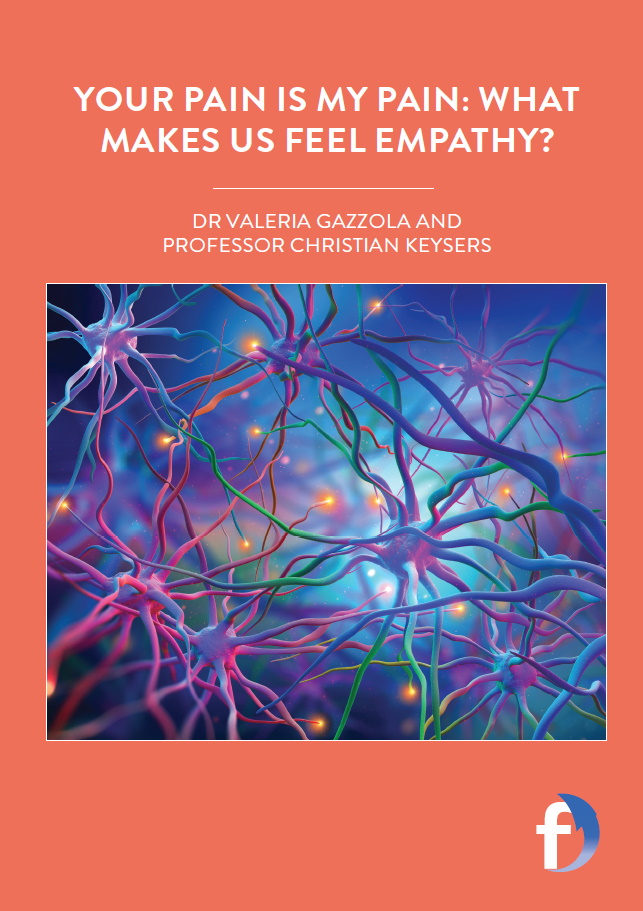
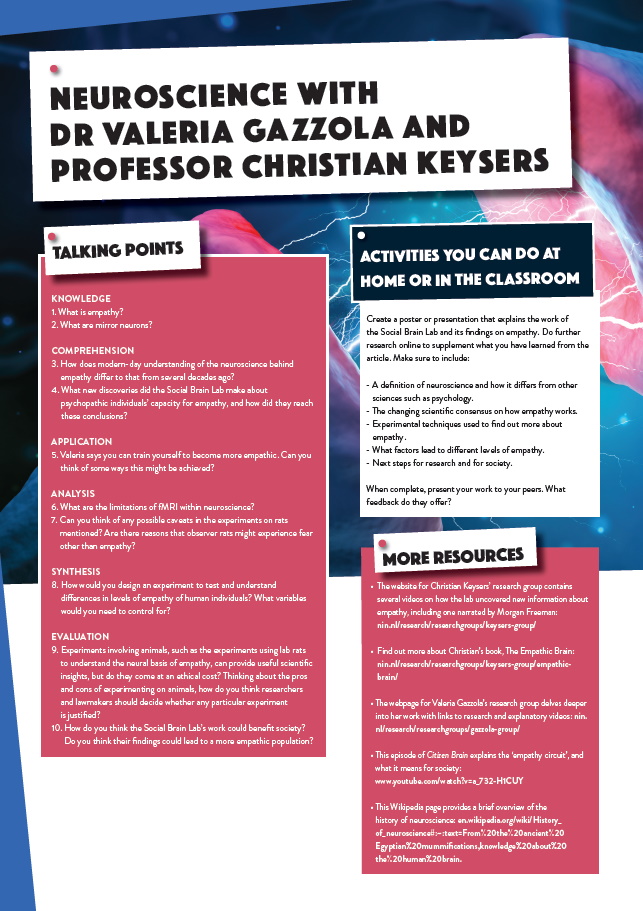
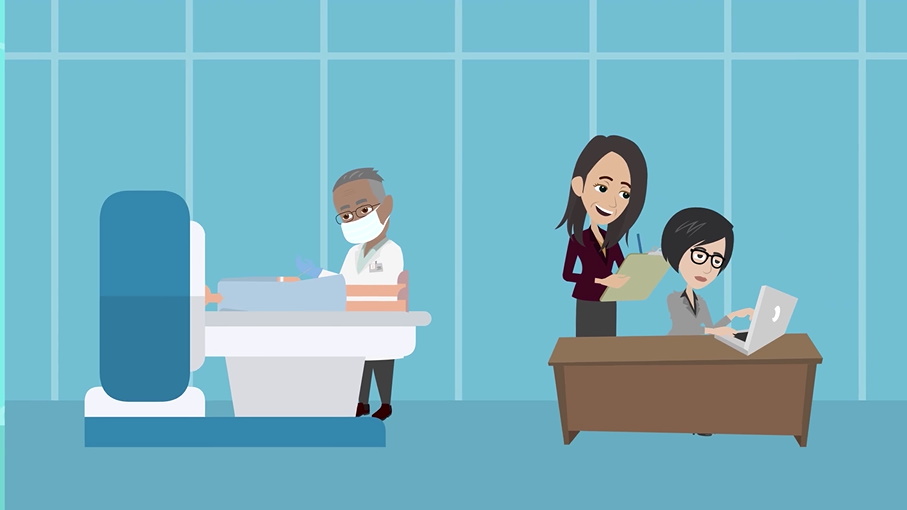

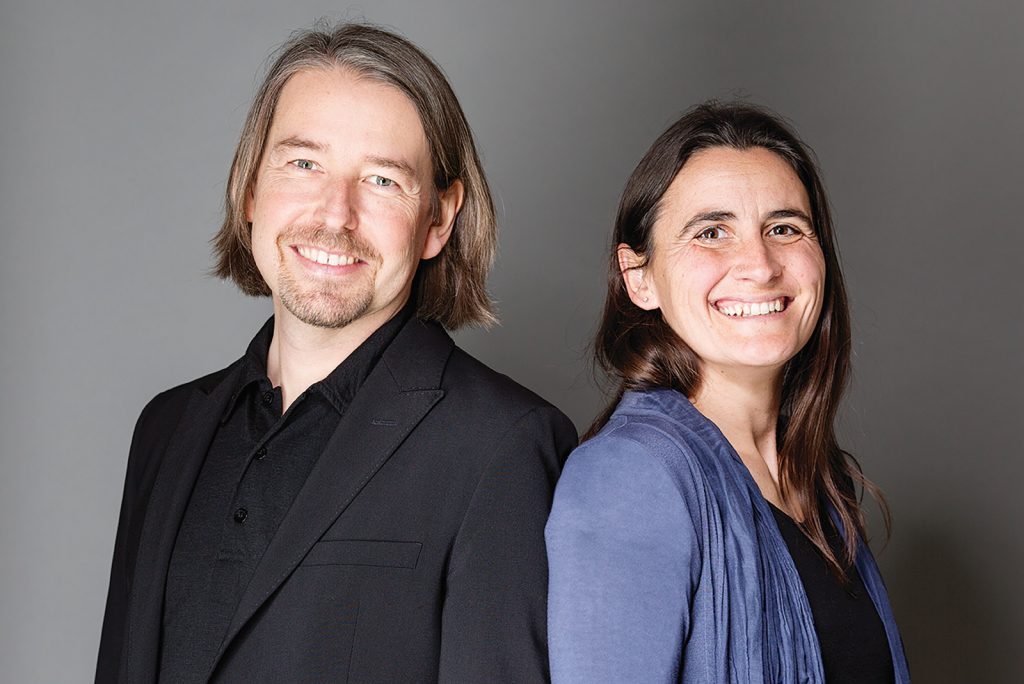






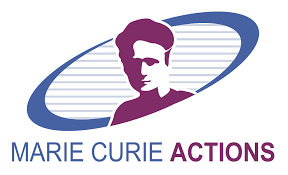





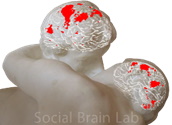
Thank you for your dedication to the field and life itself.
I am in a pain program and all the literature calls it “your pain”
I have an issue with calling it my pain.
I believe I am experiencing pain but don’t own it
Also that there is a Universal pain and that when I come from that viewport suffering is reduced as it is shared.
The practitioner believes and holds hope that I will own the pain.
Your thoughts please?
Deep respect and gratitude
Kate